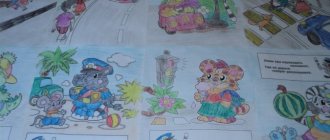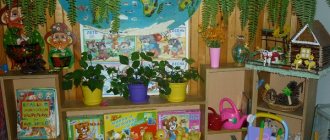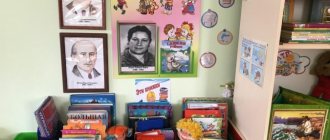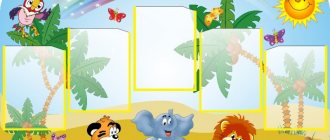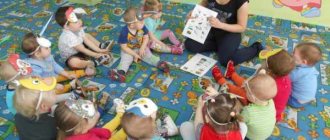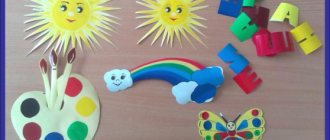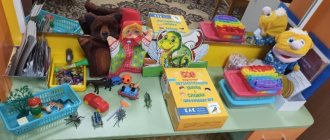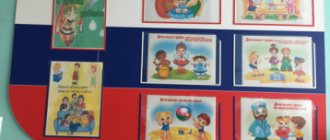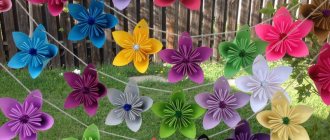Article “Methodology of working in a corner of wildlife”
WORKING METHOD IN THE WILDLIFE CORNER
The article discusses the current problem of practical significance and the need to introduce a corner of wildlife at school, the inhabitants of the corner of wildlife.
Keywords:
nature, plants, animals, protection, wildlife area.
Currently, the formation of strong knowledge, skills, environmentally sound behavior, ethical standards and principles of attitude towards the natural environment is impossible within the framework of the classroom-lesson system alone. It is necessary to expand students' contacts with nature and the animal world. Involving them in real, practical activities to study the animal world and protect the environment.
One of the forms of organizing such activities is a corner of wildlife. A corner of wildlife is a rather attractive object of observation and care for children. After all, this is not only a place for storing living plants and animals and for preparing experiments with them, but also a place for conducting extracurricular and extracurricular activities. Children should be taught to work in a corner of wildlife from the 1st grade.
The initial course of natural history is fraught with great opportunities for solving such problems as nurturing love for the Motherland, for native nature and caring attitude towards nature, its riches, nurturing hard work, aesthetic views, etc. To successfully implement these tasks, experienced teachers call students have a direct interest in studying their native nature, showing them the strength of natural connections. Only on the basis of knowledge and skills can we convince schoolchildren of the need for a caring attitude towards the riches of nature.
A corner of wildlife can be in a natural history classroom and be an integral part of it. It is better if the school has a separate room to accommodate it. This could be a school-wide corner for children in junior and senior classes. Here work can take place with plants or animals in classes and groups depending on the interests of the students.
The room for a corner of wildlife must be well lit and meet the standards and requirements for keeping animals and growing plants. A constant temperature should be maintained in a corner of wildlife: this is the optimal condition for plant growth and keeping animals. The selection of plants and animals and the determination of their quantity depend on the specific conditions of the school.
The main pedagogical requirements that a teacher should follow in organizing extracurricular work in a corner of wildlife are:
- accessibility of material to students;
- local history approach in the selection of material;
- the principle of seasonality in work;
- socially useful orientation.
Based on the requirements of the natural history program, the content of work in the wildlife corner by year of study may be as follows:
1st – 2nd grades
. Caring for 2-3 indoor plants, developing the skills to water plants, wash and trim leaves, remove dust, etc. Maintaining a nature and labor calendar. Participation in feeding birds. Observing fish in an aquarium.
3rd grade.
Caring for 6 - 7 indoor plants. Observing the budding of shoots of the most common trees and shrubs in the area, growing vegetable plants from seeds, and ornamental plants for the school yard. Observation of the life of the most common insects in the area (1 - 2 species), the life of birds in cages, aquarium fish, animals (frog, toad, squirrel, hedgehog, white mouse, guinea pigs, turtles, etc.).
4th grade
. Caring for indoor plants, replanting them, vegetative propagation (cuttings), growing seedlings. Conducting experiments to determine the influence of weather conditions on the budding of trees and shrubs. Observation of aquarium fish, feeding, care and observation of all inhabitants of the corner of wildlife.
Plants are selected in accordance with the natural history curriculum. The greatest variety is represented by indoor plants. Indoor plants should be selected in such a way that, using their example, students can be introduced to the external structure of plant organs, methods of reproduction, and carry out a variety of practical work on growing. In a corner of wildlife you should keep unpretentious plants that have an aesthetic appearance. The most common indoor plants: aloe, agave, aspidistra, aspagarus, balsam, begonia, gloxinia, cacti, saxifrage, coleus, clivia, various types of cacti, cypress, monstera, pelargonium, ferns, sansevieria, tradescantia, Uzambara violet, ficus, fuchsia.
In the spaces between the windows of the classroom, you can equip a hanging aquarium and terrarium, where you can keep individual representatives of local and aquarium fish, reptiles or amphibians. Examining a corner of the underwater kingdom through the glass of an aquarium, schoolchildren are clearly convinced that everything in nature is closely connected to each other. In a properly equipped aquarium, animals are in conditions close to natural, so observations of them provide interesting information about their lifestyle and behavior, as well as a wide variety of adaptations to the aquatic environment.
In addition to fish, aquariums can contain some mollusks, swimmers, hydras, leeches and other invertebrates. Mollusks are the orderlies of aquariums. School aquariums can contain various shellfish collected from local reservoirs, but it should be remembered that after catching them they cannot be immediately placed in the aquarium. Shellfish are carriers of various infectious diseases, so they are initially kept in clean water.
The corner of wildlife may contain hydras, mollusks (coils, physes, pond snails, toothless ones), daphnia, cyclops, diving beetles, diving beetle larvae, dragonflies, mayflies.
Inhabitants of this corner of nature:
Fish: primarily aquarium fish: gouramis, swordtails, macropods, cyclasomes, goldfish, barbs, crab catfish. For a school corner of nature, it is more expedient, and most importantly more accessible, to set up the simplest aquarium, let’s call it a cold-water aquarium. It is in a cold-water aquarium that river fish studied in school and out-of-school institutions can be bred and kept: perch, carp, crucian carp, smelt, tench, rudd, gudgeon, and loach.
Amphibians: gray toad, ambystoma.
Reptiles: Central Asian tortoise, lizards (viviparous, fast). Reptiles are kept in terrariums.
Insects: silkworms (mulberry and oak), cabbage butterfly, ladybug.
Birds: canaries, redpolls, budgerigars, siskins, goldfinches, buntings, weaver birds, parrots: rosella, cockatiel.
Mammals: chipmunk, common white mice, white rats, squirrel, hamsters, guinea pigs.
A wildlife corner for primary schools is extremely important. Constant communication with living objects, conducting observations and experiments with them, as well as performing systematic work on caring for animals and growing plants teach children to be independent, increase responsibility for completing tasks, and instill a love of nature.
In the process of long-term observations of plants and animals, schoolchildren accumulate knowledge that allows them to correctly understand what their growth and development depends on, what is the relationship of plants and animals with the environment, which contributes to the formation of a scientific worldview of the phenomena and processes occurring in living organisms.
It is important that in the corner of wildlife and in the training and experimental site, plants listed in the Red Book are grown, and mainly those that are subject to protection in the area. All extracurricular and extracurricular work should be directed toward the protection, study and expansion of protected natural objects.
The corner of wildlife is an important part of the material base in the educational process. It contributes to the best implementation of environmental and environmental education, the formation of a scientific worldview, the education of scientific and atheistic beliefs, and the instilling in children of patriotic and moral feelings and love for the Motherland.

